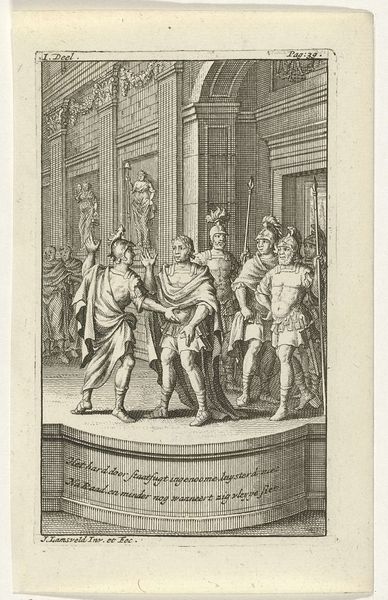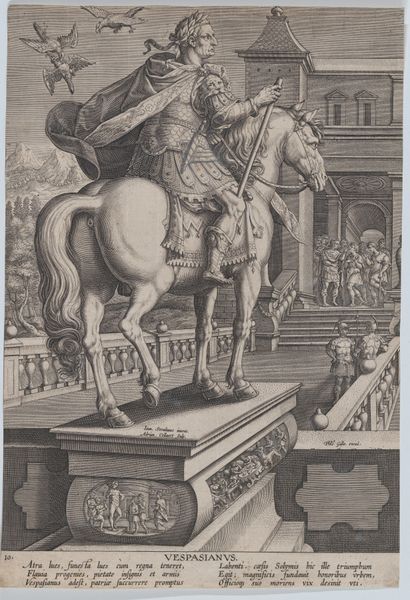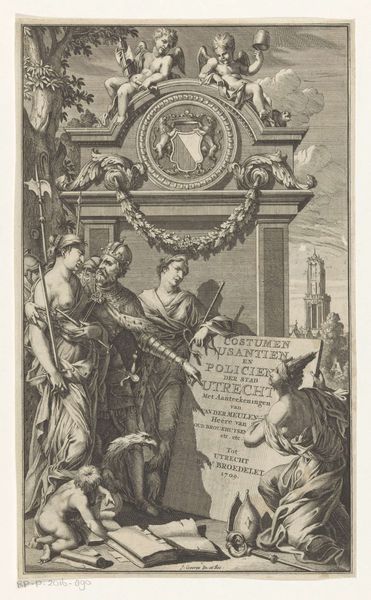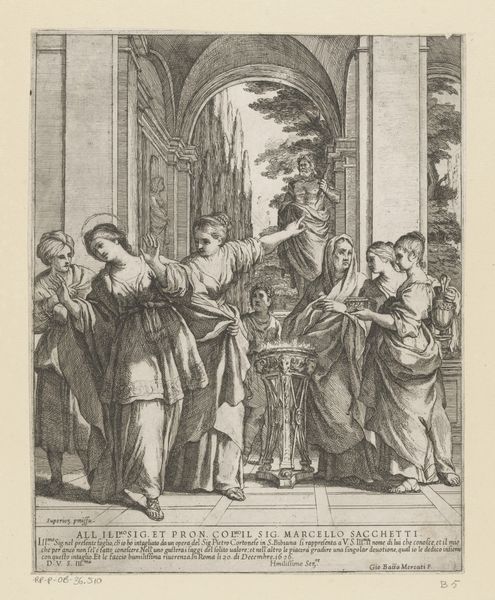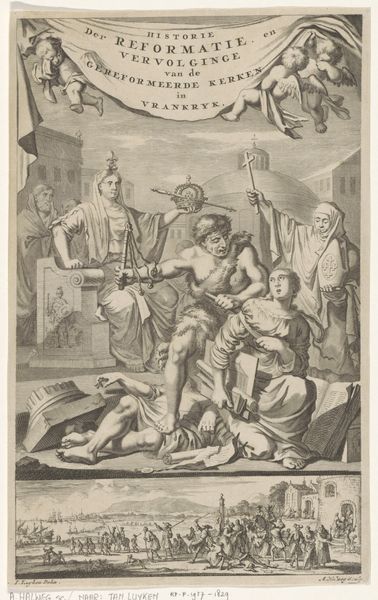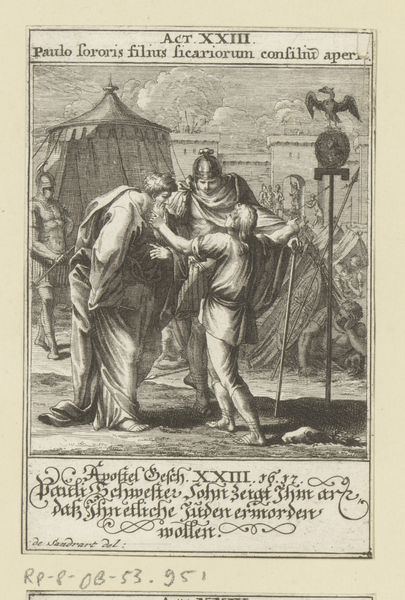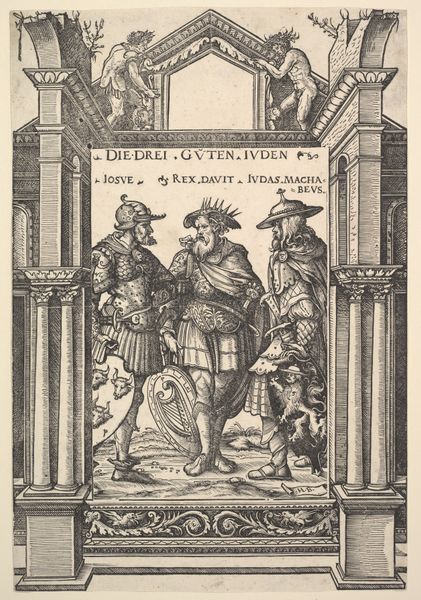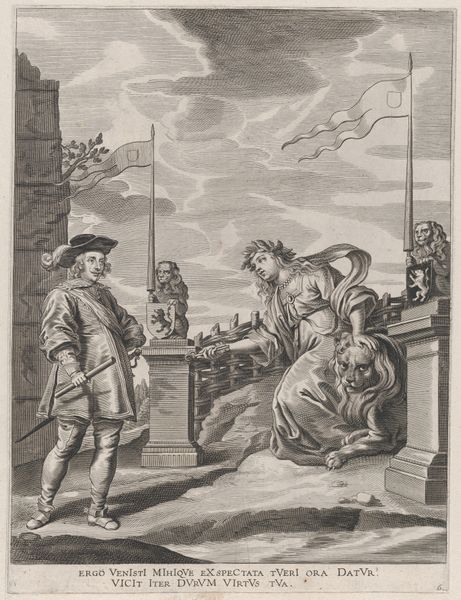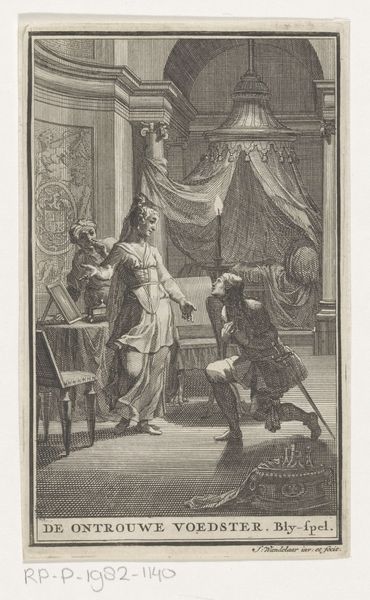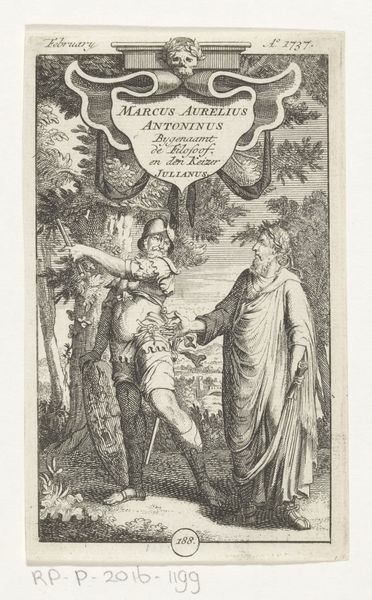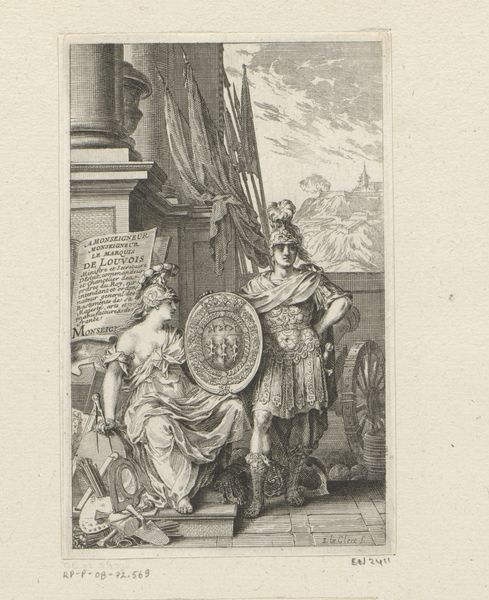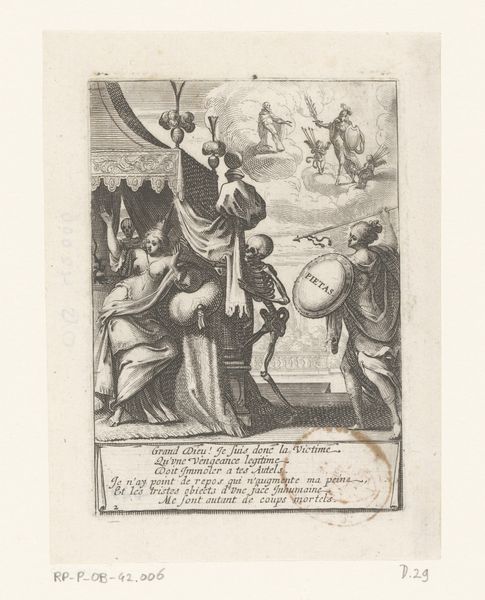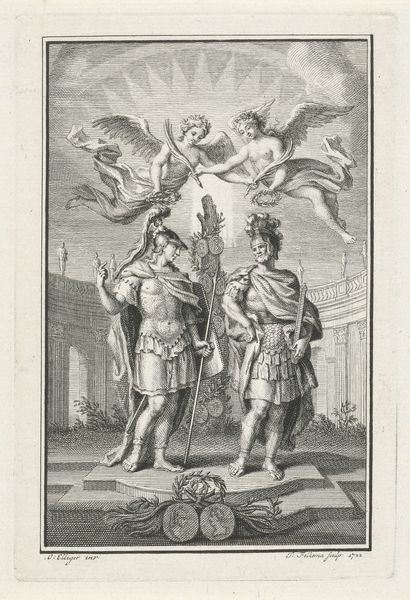
engraving
#
baroque
#
figuration
#
history-painting
#
engraving
Dimensions: height 115 mm, width 73 mm
Copyright: Rijks Museum: Open Domain
Curator: Here at the Rijksmuseum, we have an engraving from 1735 depicting the meeting of Emperor Conrad III and Emperor Henry VII. It is the work of an anonymous artist. Editor: The composition feels almost theatrical. The way the figures are posed against that rather imposing architectural backdrop… it creates a very deliberate sense of grandeur, wouldn't you agree? Curator: Absolutely. Look at the careful deployment of line to define the architecture—notice how it both frames and contains the figures, subtly underscoring the importance of imperial structure. Even the hatching technique creates textural depth that draws the eye into every plane. Editor: Yes, but think about the engraver, the artisanal process… cutting these fine lines, replicating a scene of power and history. The labor involved in producing such an image allows for wider dissemination of that imperial narrative to new audiences. How did this engraving function within its contemporary society? Who purchased it and what did its presence signify in their lives? Curator: An intriguing question. The print utilizes symbolic codes such as the crown and scepter that were intended to signify their authority and their claim to power that would have been recognizable throughout European courts. But the interaction itself feels somewhat stiff, almost posed. Editor: Precisely! How much of that is a function of the material constraints? An engraving cannot capture the nuance of a brushstroke, and yet it allowed the historical moment, as staged as it may be, to spread throughout 18th-century Europe. Think of all of the workshops churning out imagery such as this that formed public perceptions of royalty. Curator: Ultimately, the beauty resides in the calculated organization of its elements, the balanced forms and lines—a testament to the enduring power of structured visual rhetoric. Editor: It certainly makes one think about the artist's contribution to legitimizing the history, while also questioning how we understand the artistic methods of replicating this vision.
Comments
No comments
Be the first to comment and join the conversation on the ultimate creative platform.

